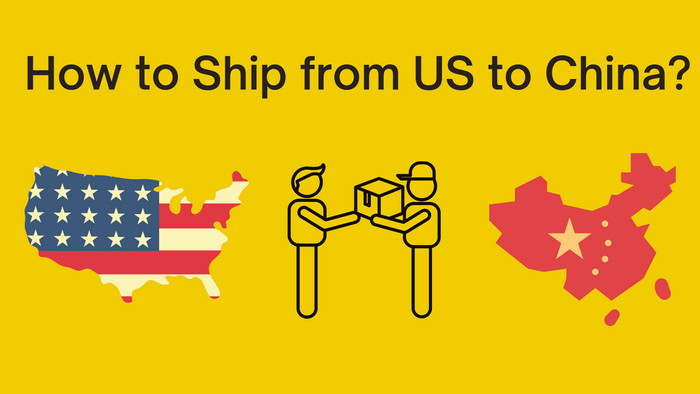While using eCommerce warehouse and logistics services, we hope to have more related data to diagnose the "health" of the eCommerce order fulfillment process. This data can help us make a data-driven decision when we spot negative issues. In the supply chain, eCommerce fulfillment services are critical for eCommerce businesses.
There are 7 types of data analysis for eCommerce retailers to consider when you plan to build a data-driven eCommerce order fulfillment workflow.
1. Order Fulfillment Cycle
The order fulfillment cycle refers to the time it takes for the customer to place an order and receive it. According to the internal data of an e-commerce platform, the order fulfillment success rate will drop by 4% every 4 hours on average if the order fulfillment period exceeds 48 hours. Therefore, it is advisable to control the order fulfillment period within 48 hours.
At least two service providers are involved in the order fulfillment cycle: warehousing service providers (receiving, sorting, stowing, picking and packing, distributing, etc.) and delivery service providers (parcel pick-up, shipping, and last-mile delivery). When we spot that the order fulfillment cycle is inefficient or incomplete, we must find out why. Is there something wrong with the warehousing service provider? Or is it the slow delivery of the courier?
The former issue can be solved by changing the outbound schedule, such as once a day to twice or three outbound times a day. The latter can be improved by asking the delivery service provider to optimize their workflow or switching to another courier.
There is also a situation where the warehouse is located too far from the destination. For example, the warehouse is located in the northeast, and a considerable number of orders come from the southeast. In this case, sellers need to find another warehouse in the southeast or choose other eCommerce shipping options.
2. Logistics Cost
The overall logistics cost includes 3 components: warehousing, operating, and shipping.
Warehousing refers to the cost of renting space in a warehouse. The flat warehouse fee is calculated as "square meter/day" or "square meter/month." The charge of the three-dimensional warehouse is "storage/day" and "storage/"Month." The clothing warehouse fee will be calculated based on pieces, pairs, etc.
E-commerce warehouse operating fees are divided into two parts based on the different scenarios: basic operating fees and additional operating fees. The basic operations include inbound, sorting, packing, and outbound. The additional operating cost depends on the product. The required procedures are different so that I won't go into details here. At the same time, we can also regard the cost of customized packaging as part of the operating expenses.
Shipping refers to the cost of postage and related transportation to get the package from the shipping carrier to the end consumer. Some eCommerce shipping software(no credit cards required) can help you lower shipping costs.
The sum of the above three expenses constitutes the logistics cost. In eCommerce operations, 7-8% of the total logistics cost is typical. The three expenses account for about 8%, 25%, and 67% of the logistics cost separately.
Suppose we analyze the monthly changes in the total logistics cost and compare it with sales to determine whether you need to cut the logistics cost. Separately comparing the proportions and numerical differences of the three logistics costs can provide us with proof for optimizing logistics costs.
3. Warehouse Process Speed
After the eCommerce order fulfillment company receives and stows the products, the inbound process is considered done. The general warehouse management process includes warehousing schedule, inbound, random inspection, sorting, and stowing.
The warehousing service provider generally completes the process within 24 hours from when the products are put into the warehouse to the shelf. If the completion time is exceeded, the management of the warehouse service provider needs to be improved. If the speed fluctuates abnormally, the problem may occur in two places:
-
1 - The quality of the product cannot pass the random inspection in the warehouse.
-
2 - The backlog is caused by the slow processing of the warehouse service provider.
Monitoring the warehouse process speed can help us track the following aspects:
-
1 - The quality of the goods.
-
2 - The efficiency of eCommerce order fulfillment partners.
The former can help us check the quality of the products. The latter can be used to monitor the capabilities of the warehouse service providers. Putting the qualified products on the shelves promptly can help us make the product ready for sales.
4. Order Fulfillment Rate
We hope that the eCommerce fulfillment warehousing service provider will help us deliver the products to the courier as soon as possible after we pass the shipping information.
There are two types of outbounds in the eCommerce warehouse process. Suppose the number of products and outbound times are significant. In that case, we then need to ask the eCommerce fulfillment warehouse partner to deliver the orders at any time.
The outbound time is short, and the sorting is carried out at different times every day, maybe once or twice a day. The outbound time here refers to the outbound requests of all sellers in the warehouse, not just one seller. In reality, the latter naturally accounts for the majority of eCommerce logistics warehouses.
For warehouses sorting orders by time, the warehouses will set a specific cut-off time with the seller. For example, orders before 11:00 on the same day, the sorting will start at 11:00. The expected delivery time is 13:00. Orders before 16:00 on the same day, the sorting will begin at 16:00. Delivery is scheduled for a pick-up at 18:00. Orders after 16:00 will be delivered to the warehouse on the second day.
It is the most common timetable. It is also a balance between the timeliness of the order execution and the time required for warehouse operations. Of course, if you encounter orders that exceed the cut-off time, you can also expedite them.
The order fulfillment rate is concerned with the ratio of the number of outbound orders submitted to the actual outbound order quantity of the warehousing service provider. Generally, we want the rate to be 100%.
5. Inventory Storage Turnover Rate
Managing eCommerce inventory is vital for all sellers. That's why we need to use the inventory storage turnover rate to determine whether we need to optimize the existing inventory management system.
Inventory turnover indicates the rate at which a company sells and replaces its stock of goods during a particular period. The inventory turnover ratio formula is the cost of goods sold divided by the average inventory for the same period. It means that how many times that the commodities have been transferred. The greater the inventory turnover rate, the more profits are earned.
In logistics eCommerce analysis, we can focus on the inventory turnover rate for a single product. A high inventory turnover rate of a product means that it sells well and can bring more profits. The profit here is not the gross profit of a single product is the profit of the capital.
Sellers usually use commodity sales rates together with inventory turnover rates. Commodity sales rate refers to the rate of the product category to the total product category at a specific time. For example, there are ten products, and three of them are sold in one month, and the other stay in the warehouse, so the commodity sales rate is 30%. The higher the commodity sales rate, the more products you sell.
There is a list of eCommerce inventory management software for your review.
6. Order Response Cycle
After we submit the delivery order to the warehousing service provider, he will start processing the order according to the outbound plan. This operation includes essential services such as sorting, packing, and preparing shipping labels. It sometimes also includes value-added services such as replacing labels and packaging goods.
After the warehousing service provider finishes, the products will be placed in the shipping area for outbound delivery.
The order delivery process requires at least three steps(order placement, product preparation, outbound delivery) with the 4 parties(customer, seller, warehousing provider, and courier).
The three participants have an inevitable response gap. Some ERP/WMS or SaaS products will record such response data. Keeping track of the timeline of the cycle helps us effectively manage service providers.
It also helps us speed up order processing. For example: For an e-commerce seller, most of his orders occur between 9:00 and 10:00, and the warehousing service provider's operation time starts at 16:00, and the order response cycle is around 6-7 hours. At this point, we can ask the warehousing service provider to process the orders at 11:00 and ask the courier to pick up the packages at noon.
Faster order fulfillment will directly speed up the outbound delivery time. Customers in the same city even can receive the goods on the same day or tomorrow morning. Customers' satisfaction will increase significantly.
Suppose your current eCommerce shipping solution provider doesn't meet your requirements. In that case, it is the right time to work with a new and reliable shipping partner.
There is a list of eCommerce logistics and shipping software solution providers. You may find the one that suits you in the article.
7. Package Delivery Rate
When customers place orders, they want to receive the products as soon as possible. The package delivery rate directly reflects the order delivery ratio, one of the elementary logistics data.
However, when we look at the delivery rate, it is recommended to add the time axis. As mentioned in the first data, the 48-hour order fulfillment cycle is the best. After it is exceeded, we need to find out why the order is late for delivery. If the courier causes the problem, you may need to consider other eCommerce delivery solutions.
Many logistics data do not exist alone, and they all need to be integrated and balanced. After careful consideration, they then proceed to "operate" on the corresponding commodities, warehousing, transportation, and operations.
In the middle east, cash-on-delivery eCommerce is popular. If you have an online sales channel in one of these countries, providing such a payment option is better. The difficulty is that you need to find a trustworthy eCommerce fulfillment company that offers cash on delivery service for eCommerce sellers.
Conclusion
Order fulfillment analysis is critical in eCommerce logistics. In practice, eCommerce analytics, from data to decisions, takes a lot of effort. By analyzing the 7 types of data mentioned above can help us quickly locate the issues.
We may not solve all the problems at one time. Still, we can gradually improve the system for better profits and customer satisfaction. There are more logistic solutions for eCommerce businesses. If the existing tool can grow with you, it is the right time to find another one.
If you need help with eCommerce international shipping, there is a free tool list for you. Contact us for more details!




![Top 11 Best Logistics Companies In Australia For Business [2022]- KeyDelivery](https://www.kd100.com/blogfile/img/best-logistics-courier-companies-in-australia.jpg)
![10 Best Courier Companies In Abu Dhabi [Ecommerce Hacks 2022]](https://www.kd100.com/blogfile/img/best-courier-service-in-abu-dhabi-dubai-uae.jpg)
